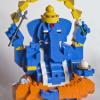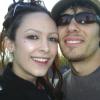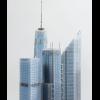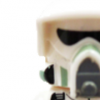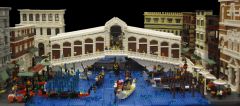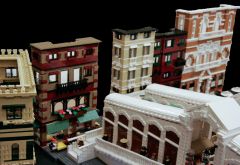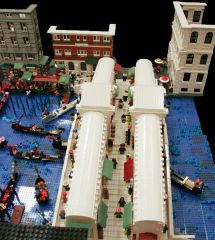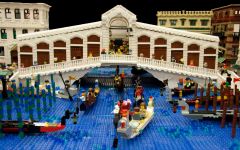Search the Community
Showing results for tags 'architecture'.
Found 375 results
-
Master Architect Challenge There are many wonders of architecture throughout Historica: massive dwarven halls, lofty elven towers, elegant cathedrals, and impregnable fortresses. But Revolword and the Elementals have laid waste to many of these structures. Now that Revolword has been defeated, craftsmen across Historica have started taking up their tools to rebuild the former glory of Historica. Show your character assisting in either the building of a new architectural wonder, or assisting in the repairs of a building damaged by the Hand or Elementals. The main focus of your MOC should be on the architecture of the building and construction work on the building. Maximum size 48x48 (2304 studs in any configuration), minimum size 8x8 (in any configuration). Deadline: August 1 (as long as it is still August 1st somewhere in the world, entries will be accepted) Prizes: There will be a winner selected from each guild and they will earn a guild specific parts pack and GoH title: "Master Architect of Historica" Prize packs: Builds will be scored in 3 categories 1. Guild style - How well does the build work with the overall styles and theme of the Guild? Are you incorporating your Guild colors? Does this look like it would fit well within some region of your guild? If your build is actually set in the lands of another guild, explain where it is and why you're building it. 2. Technique - Is your build very original? How does your build stand apart? Have you utilized some new techniques that you haven't seen before? Did you have a very intriguing storyline or did you show entertaining interactions between the characters in your MOC? Creativity and originality will help boost your score here. 3. Presentation - Does your presentation pop? Are your pictures crisp and clear? Did you provide different views of you build? Did you provide a good description of the build to accompany your pictures? Photo quality is a key aspect. Post a pic of your entry here, and a link to the topic. If you have any questions please ask
- 88 replies
-
DO NOT ADJUST YOUR SCREEN! The tower is meant to be leaning. Well, actually, it isn't, but it does, and it's why it is so famous that even Americans have heard of it! ( ) Although, that may be in part due to Superman III. I can now officially reveal that 21015 - the latest LEGO Architecture set, coming (in a numbering system of which George Lucas would be proud) immediately after 21017 - is not 'Eames House' as previously thought, but is instead the famous Leaning Tower of Pisa. Actually, it's the Campanile (bell tower) of the Duomo di Pisa (Cathedral of Pisa), but what has really put it (and Pisa) on the map is its rather jaunty angle. It is one of the most famous landmarks in the world, and despite Italy's abundance of Roman, mediaeval and Renaissance architecture, it is the obvious choice for the Italian entry to the LEGO Architecture Landmark Series. I'm sure its architect would be rather chagrinned to know that his creation is more famous for its lean than for its architectural merit, especially as the tower itself has merit aplenty, and might even deserve a place in the LEGO Architect Series if anyone had seen fit to remember the poor blighter's name. Anyway, we're here to discuss the Leaning Tower in official LEGO form, and so I'm proud to announce another Eurobricks Exclusive Architecture review, with thanks again to The LEGO Group! Review: 21015 The Leaning Tower of Pisa Informazioni sul Set Name: The Leaning Tower of Pisa Number: 21015 Theme: Architecture (Landmark Series) Release: 2013 (May?) Parts: 345 (including Brick Separator) Weight: 472 grammes Price: TBA Disclaimer: At the time of writing, the set isn't listed anywhere, and I don't even have a price for it yet. As such, I'm not able to comment on the set's value for money; but there's still a lot to talk about! Links ... LEGO Architecture Site ... Shop@Home ... Brickset ... Bricklink ... Peeron La Scatola Click the picture for a larger full-frontal Once again, the latest LEGO Architecture paperweight demonstrates its abilities on another smartly austere all-black box. The LEGO logo really stands out, yet the beauty of the design of these Architecture boxes is such that you forget that LEGO usually stands for a toy. The picture is - I believe - a render, but it's wonderfully done, and captures the tower from its best angle. Interestingly, this set carries the name of the tower in Italian - Torre pendente di Pisa - in addition to its location; I haven't seen that before on Architecture sets from non-English speaking countries; but then for most of them the name is the same. We can also see that Adam Reed Tucker returns to the helm for this latest voyage into LEGO Architecturedom. Round the back, we are treated to the usual picture of the 'real' building and a composite render/line-diagram of the model with dimensions. I always like the splash of colour that the 'real' photos afford. My box has got a little scratched on the bottom, probably because it was rattling around alone in a box large enough for two; the photo has unfortunately highlighted this. Click the picture for a larger image Interestingly, the Italians, having been afforded second billing on the box front, are relegated to last place in the pecking order of European languages, behind English, German, French, Spanish, Portuguese, and Similish. (Google Translate thinks the last is Hungarian - did you know Hungarian doesn't capitalise place names? I didn't. ) The Italians are, however, the only nationality to be told that the included booklet is in Italian. Well, also in Italian ... Having seen a picture of this model from a toy fair, I was expecting a smaller set, and was a little surprised by the size of the box. Measuring H 260 x W 190 x D 59 mm, it's the same height as the Big Ben and Willis Tower boxes, but considerably wider. I wasn't sure whether to include this box comparison picture, but it does show how wonderfully collectable these sets are! The sides of the box are identical, save for the designer's name almost lost beneath a weight of languages on the non-flap side: The picture is the same as the box front, minus the paperwork. If the orientation of this picture offends you, click here. A 1x1 round brick is THIS big! According to the box top: Yet more languages! And no, ghosts aged 0 to 3 cannot play with these parts. I still appreciate the feeling that a lot of attention has been paid to these Architecture sets, and the ever-present command to 'Enjoy your building experience' is welcome as always: Inside the box are four polybags, the Booklet, and a flier inviting you to take part in a survey to try to win the Farnsworth House (one of the few Architecture sets I don't own - how did they know???). I think that flier has been in every Architecture set I've opened - they must have given away quite a few Farnsworths by now. Il Manuale di Instruzioni How cute! This little book measures 125 x 170 mm, a little over A6 size, and perhaps its orientation favours the dimensions of the model itself. Despite its diminutive poratrait, it is quite a chunky tome, with exactly 100 pages including front and rear covers. As now expected for the Architecture line, extensive information about the tower - including the reasons why it leans but hasn't fallen down - occupies the first twelve pages ... Click for a larger picture ... and all accompanied by some wonderful pictures and some wonderful Italian. Pass the Pinot Grigio, darling! I've said it before: the care and research that has gone into producing these Architecture booklets is outstanding, and help make these sets far, far more than simply a construction model. Did you know, for example, that the tower started leaning during construction, and that the architect attempted to compensate, so that the tower is actually curved? (To be fair, I think I did know about that, but now I know it in much more detail. ) I won't take away one of the major selling points of the set by showing pictures of the entire content of the booklet; however, it usually becomes available on the LEGO Architecture site before too long, albeit not in English. The downside of the pretty booklet's dimensions is that it is stupendously difficult to photograph, particularly if you're trying not to damage the book. Several attempts later, I was able to capture a sample of the instructions themselves: Little factoids appear in the corner every four pages, and add further delight to the experience. The inset shows a close-up of this one (see! I told you the tower is curved!), and conveniently obscures Rufus's hand, which was a necessary prop after the Blu-tac didn't work. The instruction steps themselves are, not surprisingly, a little repetitive; however, there is a twist which may cause problems for anyone attempting to speed-build the set. But why would you do that? You'd miss out on all the little snippets! The 'twist' will be revealed later. The manual concludes with the Inventory, but not before the usual 'Word from the Artist' spiel, and the History of LEGO Architecture, with which any Architecture aficionado will be well acquainted. The former is noteworthy for a little picture of Adam Reed Tucker with a couple of prototypes of the LEGO Leaning Tower, showing that he experimented with various widths of tower. Le Parti A surprising flash of orange breaks the monotony of the Larger Parts selection, but it's only a Brick Separator. They get everywhere these days, like cockroaches. I'm sure that after mankind destroys itself, the post-apocalyptic world will be littered with both of these. Looking at the round parts in the top right, you'd be forgiven for thinking you're about to build a Wind Turbine. Most interesting here are the nineteen 2x2 plate hinges, useful for anyone building a (properly) round tower, and the large quantity of white 1x3 arches. I remember being excited to encounter one of these when I reviewed 5771 Hillside House; now I have another thirty-five of them. Architecture sets don't generally make great parts packs due to the relatively high cost, but if you're looking for certain white parts in large quantities you might be tempted. In particular, the forty-eight 1x1 plates and eighty-six 1x1 round bricks could be very useful indeed. Aside from the large quantity, there aren't any particularly rare parts in this set (excluding the printed Leaning Tower plate, which is of course unique); the selection is however remarkable for the small number of types of part used: there are only forty different parts in the set, including different colours of the same part and the brick separator. La Costruzione We start with the base... or do we? Clearly this ins't the whole base. Actually, this is just the bit that tilts; whoever made the instructions clearly thought it wise to spare us the horror of trying to build the entire tower whilst it is leaning. In the second pane we see already how the tower will be constructed. In case you hadn't worked it out already, the LEGO tower has five sides; it is built via a pentagonal arrangement of 2x2 plate hinges around a round 4x4 core. At the moment, the pentagon is only attached via the two jumper plates in the first frame, and - when the small sub-build in the right frame is attached, will be open at the furthest point from the camera. This brings us to an important point, which I think should be made now as I will refer to it throughout the build. The LEGO Pentagon When building a ring-structure from plate hinges, usually you can create a 'complete' ring from two layers of plates. It is the key step to building a 'round' tower, like Derfel Cadarn's. However, if building a ring with an odd number of sides, where the length of a side is less then four studs, you need three layers of plates to complete it: In fact, in this tower, in any one layer of plates only two sets of adjacent sides can be joined. This is important, as we shall see. A third layer of plates is indeed added at this point, completing the ring, and a 2x2 pin-brick - 1x1 technic brick connection further secures the ring to the central core. This is the only attachment between walls and core above the base, and helps to prevent the walls coming off if you lift the set by grabbing the tower. Some 1x1 bricks and plates build up the centre of the walls here. In case you're wondering about the black plate on the left of the picture, it will be covered up eventually. I guess it helps you to orientate the nascent model easily during construction. Next, a clever use of technic connectors atop 1x1 round bricks forms the columns: On top of these are placed the first of the many 1x3 arches, and they are covered with a layer of plates. Note again that some of the sides are connected together with hinge plates, but it's not possible to connect them all. The core is built up with half-cylinders and round plates, very much in the style of a wind turbine, and a further layer of 1x1 rounds and arches goes on. Now things get a little repetitive, as we start to add layers to the tower. However, if you were thinking of pre-fabricating the walls, think again: you can't. At each layer, two different sides are connected. Going clockwise with the 'front' (black plate) being 1, in the first frame sides 2 & 3 and 4 & 5 are joined; in the second, 1 & 2 and 3 & 4 are linked. The side which is 'left out' gets a 1x3 plate instead. It helps to follow this 1x3 plate: as we work up the tower adding layers, the side with the 1x3 plate moves around anticlockwise: sides 4, 3, 2, 1 respectively. This is how strength is achieved without a bulky 3-plate high ring at every level. At intervals, an extra layer of central 'core' is added. Although it is a little repetitive here, watching which sides get linked keeps you on your toes. It helps to build a lot of 1x1 round brick - 1x3 arch arrangements in advance, though. The walls are topped with some 1x1 round plates, which can be a little fiddly. The narrower topmost layer is built directly onto the central core: Note again that there's nothing connecting the walls to the core above the base. A cute little flagpole tops off the roof ... ... and that black plate is finally covered. Now to make it lean! For this, we need a little clicky-hinge arrangement, and the rest of the base: The base is 14x14 studs, made from a square of 2x12 plates. Note the light bluish grey 4x4 mostly-tiles, which will support the lower end of the tilty bit of the base ... ... like this: Aside from a few more tiles, we're done. All your base are, finally, belong to us. Il Modello Completato Leaning Tower, you're ... taller than I expected. At 259 mm tall, she's the second tallest of the entire Landmark Series; only the Burj Khalifa is taller, but that is the tallest building in the world, so that's to be expected. Only the 'real' Leaning Tower is actually the smallest of all the Landmark buildings: its scale is determined by the design. Interesting construction aside, the decision to build the tower as a five-sided polygon has its drawbacks. I guess it is the smallest scale which produces an approximation to a 'round' tower, without resorting to round pieces, and allowing the inclusion of arches; however, some of the 'roundness' is lost from some angles: These four views - shown against a black backgorund for emphasis - demonstrate the difference in profile caused by the pentagonal cross-section. Viewed square-on, there is a 'flat' side apparent in the two views perpendicular to the 'lean'; in the views parallel to the lean, you're facing either a side or a point of the pentagon. The base level of the 'real' tower has a number of 'filled-in' arches producing slight alcoves, with a rhomboid design at the top. The model replicates the latter with round plates in the arches; it's probably the best that can be achieved at this scale. The downside is that the recesses of the alcoves are lost, but there probably isn't a better way to achieve this. The use of the technic connectors to make smooth columns is rather effective here. And now for the obligatory gratuitous close-up of the printed tile: It's interesting that the set name (according to the box) is The Leaning Tower of Pisa, while the 'The' is omitted from the tile. Of the other Landmark sets, only (the) Empire State Building is habitually referred to with an article; however, in that case both tile and box say simply, 'Empire State Building'. The tower looks quite pretty from above! Note that the top of the utmost layer is 'closed off' by the 4x4 round plate; the real thing is open to the air up here. This aerial shot highlights a slight anomaly of the pentagonal design. The inside 'radius' of this pentagon is wider than that of the 4-wide cylinder which makes up the core, but the two are attached at the base on the leftward face in this view. Thus, the origin on the pentagon doesn't sit in the centre of the the circular core. This produces an interesting but unwanted effect: the walls, attached to the core only at the base, 'wobble': I've tried to illustrate this photographically; it's much more obvious 'in the flesh', and you'll notice it whenever you pick the model up. Since it'll spend most of its time on the shelf - an isn't especially obvious visually - it isn't a big deal. Rispetto alla Torre Reale We've seen the model; now for the reality check. Here's the real Leaning Tower, picture courtesy of Wikipedia: Firstly: the angle of the tower. You can't judge the angle by comparing the two shots; they are most likely not taken from the same direction. We'll deal with that more 'scientifically' shortly. Obviously, the LEGO tower isn't round enough; you could argue that a larger scale model (eg., six sides) would produce a more realistic approximation, but I guess there's a cost/benefit ratio to take into account here, and I would wager that TLG wouldn't want to risk losing sales to a much more expensive and only slightly more authentic set. In the booklet, you can see that Adam Reed Tucker experimented with various sizes. I think the five-sided result must have been a necessary compromise. Clearly, at this scale, much detail is lost; in particular, there aren't nearly enough arches. The real tower has some thirty arches per level; a realistic model would perhaps have to have fifteen sides to even approximate to this number. I think the ideal compromise would perhaps be an eight-sided tower, but even this would be monstrously big, and perhaps prohibitively expensive for many. I can live with LEGO's 5-sided compromise. There are a couple of things I'm not so keen on. One is the use of 1x1 round plates to top off the walls, and the 'roof' (which shouldn't be a roof: you can see sky through the arch on the topmost level, or you can look here). They 'round off' the top too much, when you can see from the picture that there should be a slight overhang at the top. I think even tiles would have better here; for the top layer this piece would have been ideal - but maybe it wasn't yet available when the set was designed. The second is the topmost level itself - it isn't wide enough. The top of the real tower is like a crown; that of the LEGO tower looks more like a pimple. Now let's return to the angle of the tower's lean. Beware: this section contains mathematics. According to the booklet, the tower leans at an angle of 3.99 degrees, but prior to restoration work between 1990 and 2001, the angle was 5.5 degrees. What angle does the LEGO tower lean at? Let's see. The tilted part of the base is 8 studs long, and its lower end sits 2 plates lower than the higher end. A 1x1 brick is 8mm in length (actually 7.9, but there's a 0.1mm gap between bricks to take into account too, so we can safely assume 8mm), so an 8-stud gap would equate to 64mm. A 1x1 brick has height:length ratio 6:5, so a plate height is 8mm x 6/5 = 3.2mm; two plates are therefore 6.4mm. The angle formed is TAN(6.4mm / 64mm) which works out at 5.7 degrees. Close enough for me! I'm impressed at the work that must have gone into getting the angle correct (assuming, of course, that it isn't a lucky coincidence). La Conclusione When pictures of this set first appeared, it was greeted with a degree of scepticism from some, who pointed out the many MOCs of this building already in existence, including the diminutive but clever CUUSOO entry by moctown. I have already pointed out that a number of compromises have had to be made to recreate the Leaning Tower at a scale which provides a degree of accuracy without being prohibitively large and expensive; even larger MOCs such as this one by torgugick have had to reduce the number of arches on each level. The decision to build the tower with five sides - whilst producing asymmetry in the profile - does lead to a more interesting build, and the overall effect is still pleasing to the eye. It is perhaps a little too narrow, and I'm not keen on the rounding at the tops of the walls and the summit, but I'm very impressed by the correct 'lean' angle. It is also considerably larger than I expected, and dwarfs the majority of the Landmark Series, despite being in reality quite a small tower (56 metres compared to Big Ben's 96m): It is useful to compare the Leaning Tower to Big Ben here. Ben crams a huge amount of detail into quite a small model: look at all the lovely SNOT grille tiles. In comparison, the Leaning Tower is really rather plain. And monochrome too: the area immediately round the real tower is paved, but it's almost impossible to find a picture of the tower without the grassy area around it; I really would love to have seen some green on the base. Easily modded, I guess. I punteggi Design 7 The tower is recognisable and not just because it leans! The five-sided design is intriguing and original, and produces a reasonable degree of authenticity whilst keeping the size (and, presumably, price) down; kudos to the designer for getting the lean angle spot on. However, the appearance is marred by a lack of colour and texture; the too-narrow top section, and the rounding of the tops of the walls. Build 9 You might expect a huge amount of repetition, but the build process is refreshingly interesting and surprisingly pacey. Seeing how the five-sided construction is realised is fascinating, especially how strength is added with hinge plates around the walls. Plus you get to learn stuff while you build! Parts 7 With only forty different parts in the set, the selection is limited, but there are large quantities of certain useful parts: 1x1 round bricks, 1x3 arches, and 2x2 hinge plates, all of which might well prove useful for your own architectural designs; however, you would perhaps be unlikely to buy this or any other Architecture set purely as a parts pack. (I say that, but I bought Fallingwater as a parts pack, and it's what got me into the range in the first place. ) Value X Now here we have a problem: we don't yet know the price! Overall 76% My score 7/10 If you are angling towards perfection, the Leaning Tower falls a little short; it is however an interesting build and its lean alone will make it stand out from the rest of the range. It's perhaps one for the collectors, or a souvenir. Some sets are must-haves at any (reasonable) price; this set probably isn't one of those, and I suspect the price tag will turn out to be a deciding factor for many. Thanks for reading! I hope you enjoyed the review. Please comment! Rufus Many thanks to Kim Thomsen of The LEGO Group for providing this set for the early review. Riferimenti The Leaning Tower of Pisa on Wikipedia Tower of Pisa information site LEGO Architecture Site LEGO Architecture on Shop@Home My flickr Set My other LEGO Architecture reviews: And Finally ... I can make them all lean! And of course ... Setting this picture up was a lot harder than it looks. Thank you, CopMike! Join the Reviewers Academy to learn how to make great LEGO reviews!
- 16 replies
-
I hope it is not too late too post for the community build. Anyways, here is my latest MOC. I had completed it on saturday, but was only able to post this yesterday. I think after all it had taken me about 6 hours. For much months the idea of using dome topsfor a senate building. intitially, I wanted to do just the building, but later I couldn't resist to make a sort of interior too. I could have used a plate build dome, but I wanted it to have a smoother look. more pics on my Flickr account. http://www.flickr.co...s/77259875@N05/ overview: the top layer is builded like a Lego Architecture set, with the 1x8 tiles on the side. I wanted to photoshop a "Senate Building" text on it, but I don't know how. Could anyone explain how to easily put text in a picture, so it looks real? reference pic: actually my MOC isn't angled enough, but Lego still hasn't produced Brick, round corner 6 x 6 x 2 Dome top. I had to improvise the statues with teeth, it's ashame there are no straight versions. without the "roof": The "roof" is attached with 4 studs. when removed, you can see the Galactic Senate's Grand Convocation Chamber. The Grand Convocation Chamber: reference pic: I made it Light bluish gray in stead of Dark bluish gray because of several reasons: Because I thought Light bley looks better, the outside of the base already is light bley, and because I simply hadn't got the right pieces and enough in dark bley . Bonus pic: (bad) photoshopped image of the Senate's C&C welcome!
- 2 replies
-
- SWCB The clone wars
- coruscant
-
(and 4 more)
Tagged with:
-
Hi all, long time lurker here but I keep plugging away with my own creations while being inspired by all of yours. This is the first one I've felt comfortable unleashing on the forum. There are aspects of it I'd like to improve, but it's my first big MOC so I committed to finishing it first, and refining it later. Any suggestions regarding the circular stacked roof on the transept portico would be welcome. I deliberated over a brick-built dome versus a hinged, petal affair and went for the latter because I felt it better suited the other techniques on display. Let me know what you think! Oh and because it all got a bit serious. Here's the Cathedral with the Occupy London protest camp for a little colour. Please forgive the banners, I cheated them in photoshop! As per Rufus's suggestion: here's an aerial reference photo for comparison: And this is the book that helped enormously in deciphering the overall structure:
- 44 replies
-
- architecture
- moc
-
(and 1 more)
Tagged with:
-

MOC Modular Building - LBGS (Lego Bank of the Golden Scorpion)
niteangel posted a topic in LEGO Town
This is my first time to do an MOC modular building, and it is a chance for me to put my profession into practice in the brick city! (I am working as an architect) There is still a lot of room for improvement and detail refinement, but at least the basic shape is all here. Yes, this is a bank, the Lego Bank of the Golden Scorpion. Finally, the Lego citizens can get their money here for shopping at the Grand Emporium and watching movies at the Palace Cinema! And yes, finally my street is starting to look different than the others! Overall view, the workers are cleaning up the place and preparing to get off work... The main entrance has two doors, left and right, separated by a little pond. The middle fountain is a mushroom jet, and water at the entrance? It is all about feng shui! (in Chinese feng shui, flowing water means money!) The front elevation is decorated with a lot of golden pieces, and the scorpion logo is right there too. It has a golden and silver on its left and right sides respectively, symbolizing trading and monetary matters. Let's talk a look at the first floor. Instead of making the whole floor removable, I retain the front facade of the 1st floor to the G/F, as a little test to see if this section cut is more useful or interesting... G/F . Basic Services (card return, passbook check, ATM, appointment booking...) The ground floor has a small counter for some basic and easy services. A guard is at the door, while you can see the ATM on the left. On the right is a lift to other floors, and it is a bubble lift! (glass lift) Another angle of the floor. A staff is handing a new credit card to the client... Let's have a ride on the lift to the next floor! 1/F Bank Vault The bank vault storing the most valuable things is located on the 1st floor. Today some green money cases are delivered and a staff is watching. Well, sounds like there are enough gold bars to buy the new Lone Ranger Lego sets coming this summer! 2/F Premium / Advance Services The topmost floor is for advance banking services, where you can find a bigger counter (I should put more staff in). The table on the left allows customers to talk to staff on more serious matters like setting up new accounts, insurance policies or getting more information on new saving plans. There are also seats for customers to wait during busy hours. Another angle. The call button of the lift is not on the wall but on a pedestal. This guy at the counter is taking out quite some money from his account! There is nothing on the roof for security reasons. You know people can go to another building from one roof to another in the modular building series, right? It is too easy! So here, there is nothing but a roof with security wire beneath. There is a UPS (uninterrupted power supply) machine but again, it is well secured with alarm system linked to the police station. I guess the crooks cannot get into this bank that easy like in the set 3661! Here is what it is like to be next to the Town Hall! :) Oh, the money transport truck has just arrived! Hope you enjoy it! The bank starts running this Monday! Thanks!- 31 replies
-
- moc
- modular building
-
(and 4 more)
Tagged with:
-
The local museum asked me to build something iconic of our town. I decided to build one of the most distinctive and iconic buildings in Longmont. The Dickens Opera House. It was built in 1881 by William Dickens as, well, an Opera Theater. I used to perform as a young boy and into my teens at the dinner theater that operated there when I was growing up. I met my first girlfriend there, and for many other reasons, it is a special place to me. Anyway, the model is built now and on display at the civic center until it gets moved to the museum where it will be on display (with a couple other of my models) until September. The design has elements of the building the way it looks today to be recognizable, that's why the front awning look the same, but I made some adjustments to add details from the way it used to look, which is why the side awning is different and the roof line is stone colored as it used to be (it is black now). On with the photos: Photos of the building This is pretty much how it looks today, (no signs on the building now) This is how it looked when I was growing up This is the sign on the building now The model It is built with over 4000 LEGO pieces, it cost me about $1200 in parts and took about 16 hours to assemble. The only non-lego part is the sticker on the sign that I made in Photoshop and printed on an address label. The poor cutting skills of the sticker was also done by me. I have some of the sign that shows some of the technique I used to design it, because I get asked about that since both the top and bottom are identical, and are the bottom of LEGO (the studs face inward toward the center of the sign) This is the sign with one of the black plates removed (left side, you can see the studs sticking out where it was attached): and give it a little turn to see how the Lego pieces are stacked:
- 20 replies
-
- Dickens Opera House
- Architecture
-
(and 1 more)
Tagged with:
-
I've finished my latest skyscraper model, the Shanghai World Financial Center. Click on the Flickr Set for more images. Shanghai World Financial Center by Spencer_R, on Flickr
- 6 replies
-
- MOC
- Architecture
-
(and 1 more)
Tagged with:
-
Hello fellow builders, Between two projets I did some simple vignettes about some architecture meme. As a student we see them often! I didn't have time yesterday to post it so here it is. I think many of you can agree about these, event if your not working in this specialities, it is, if I can say that, the same in any work! Please enjoy! Because you have to finish this! A vision about the architect profession! 1. Your friends think you do some press presentations and projects releases 2. Your parents (hopes) your making (enought) money 3. Your society think you arrive with a new vision and / or weird artist concept! 4. Your students think your a good manual person 5. You think your doing something genius has Frank Lloyd Wright did 6. What you are really doing is try to stay awake to finish your project and after that think about eating and sleeping! The old version of our loved / hated program! When he's in you work, when he's out... well obviously you don't work harder! So what do you think about these? Comments and suggestions always welcome. --------------------------- Thanks! Harton
- 3 replies
-
- Architecture
- vignette
-
(and 1 more)
Tagged with:
-
First of all, a big thank you to Bonaparte and LEGO for making this review possible. This has been really fun. I knew very little about this set when it was given to me, so I looked it up and found that it looked to be a very good set. As I'm going to study engineering, the architecture series really quite appeals to me, however, I'd never gotten one as I really like minifigures. Will this set hold up to my expectations? Read on! Set Information: Name: Imperial Hotel Set Number: 21017 Pieces: 1188 Price: US $130 Ages: 12+ Minifigures: N/A Theme: Architecture Year of Release: 2013 Brickset Flickr Set I left plenty of pictures in their large size! Box: The overall design of the box is the same as the rest of the line, black, with a shot of the model. Very professional looking. Underneath the model, there is what looks to be blueprints, which really give the set a "design" feel. Flipping the box over, we have some writing about the set as well as some construction details. A picture of Frank Lloyd Write adorns the upper right corner and his signature is in the bottom middle. The left side of the box has pictures of the left side of the built model, and an overhead view of it. On the right hand side, there's a faded out shot of the front of the model as well as the name of the designer; Rok Kobe. I find the top most interesting. Along with the 1:1 image, there's a part of the model in a brick-paper format that fades to the built model. Also on the top there's a box that says, "Frank Lloyd Wright Collection." Nothing to special about the bottom, just your usual warnings. Contents: Architecture sets have flaps and open much like other toy boxes, when I opened mine it looked like this. Quite full, and the "Enjoy your Building Experience" printed on the bottom of the box here, made me smile. Inside the box were 10 bags, the manual, and six 6x16 plates. Only a few parts stuck out to me, the 3x3 corner slope in sand green, the 2x1 brick with studs on one side in light bley, and the printed 1x8 tile. (Though in every Architecture set) I believe the 2x1 brick is new for this year. Here are our extra parts. The 1x1 tiles and plates are most useful to me, and there are quite a few of them. Manual: The manual is much more of a book than the usual LEGO set, it's bound and is made of much heavier paper than a usual one. The front of the manual has the same art as the front of the box, minus some of the facts about the set. On the first inside page, there's a picture of the hotel as it stands today. (As well as what was recreated in the set, minus the tourists) Continuing on, much more like a book, there's a contents listing on the second page. Underneath a paragraph talking about the destruction of the hotel, there's a painting of the hotel, and I must say while simple it looks like a grand building. As you continue turning the pages, you come across the two page spread. Exactly like the one on the of the box, but three or four times larger, it was also very hard to photograph. Each step in the manual was very clear, I had no problems telling what color was what. Here's a shot of just one of the many steps in building the model. The Build: Here I cover the first few steps. We establish the base for the hotel as well as the concrete around it. (Each of the build pictures link to a 1600+ pixel version) Continuing on, the first level is constructed, with plenty of half-plate offsets. Then the roofing over the entrance is added, and the bottom floor is completed. You then start on the second level and add some of the many windows. Finally, the roof is added, and the model completed. Finished Model: Wow, is a good word to describe the completed model. I could sit a look at it all day. The size, details, and colors really have a "wow" factor and make the model shine. Here you can see the many windows that you are built using snot techniques, really nicely done LEGO, and capture perfectly the real look of the building. The back of the model is flat, and has no details what-so-ever. But since you never see the back why put anything there? This set is big. At 34 by 30 studs the hotel has a large footprint, it's bigger than Bag End! The next several pictures are all of parts of the model that I thought had interesting building techniques or just looked cool. Here we have some of the windows and the roof, that I think works nicely together, The front entryway to the hotel is very ornate. A lot of half-plate offsets are used in this model, you can see a few here. The windows here on the side are attached with 1x1 bricks with a stud on one side, the snot gives the building a great look. This technique here isn't new, I just think that it looks pretty neat. Looking at the real building alongside the model, it's very close. I'm not sure about the decision to recreate it in tan, but it does work nicely with the green. The only one thing that could be added is the reflection pool, but that's not part of the building so I see why it wasn't included. Conclusion: There's no one good word to describe my feelings for this set. It's large, accurate, and I had an amazing time building it. I was mostly surprised at how complex the model really is, though I'm fairly sure this is common for Architecture sets. 1188 pieces make this the second largest set in the line, and a very good introductory set for it. Again, I'd like to thank LEGO and Bonaparte for the opportunity to review this set, I had a great time! Ratings: Playability: 9/10 This isn't a set you can play with, however, it would make a great model to put on your desk as a conversation piece. Design: 10/10 The design is top notch. It matches the real building nicely and I find no flaws. There are a variety of techniques in this set that I thought were interesting. Price: 9/10 I didn't pay for this set, but for any set with this large if a piece count anything between $100-$130 is very fair. Parts: 10/10 There was a huge selection of tan light bley, and dark bley tiles and plates. These sets are known for that but I didn't realize it until I got one. Total: 38/40 An excellent score, I would pick the gem up if you've been thinking about it, or even if you haven't! Like this review? Want to learn how to make good reviews? Then join the Reviewers Academy!
- 32 replies
-
- 21017 Imperial Hotel
- Architecture
-
(and 1 more)
Tagged with:
-
I've built this little MOC last year, after my actual trip to China. Hope to order some parts via Bricklink to built more accurate one... Also, I don't like these photos... Of course, it looks much better in real life and on preview pics with low resolution.) More photos on Flickr
-
Wrest Point Casino After picking up a few Architecture sets at 50% off I was inspired to try one of the local iconic buildings. The scale is off and a few details have been omitted but I'm pretty happy with it for now. Wrest Point Casino by Taz-Maniac, on Flickr Wrest Point Casino by Taz-Maniac, on Flickr
- 5 replies
-
- casino
- architecture
-
(and 2 more)
Tagged with:
-
Well, this was going to be my entry for my MOCoff with Flare. But he backed out two or three days before the deadline, so I won by default. I'm quite happy with how the MOC came out, and yes it is supposed to only be viewed from the one side. Flickr Set Facebook
- 6 replies
-
- MOC
- Masked Builder
-
(and 2 more)
Tagged with:
-
In January 2013 the House of Literature opens in Fredrikstad (Norway) and Earthtree Media (where I work) will be moving in to new offices on the first floor. Griff Architecture, that we share offices with today (before we move in to these new offices), has drawn this house that lies at the river promenade in Fredrikstad. Here are some pictures of the house taken yesterday: I thought the architecture-style on this house was very nice and wanted to make my own model of the house, and here it is!
-
Hello folks, Its been a while since I post something in this section, but this time is over, and I restart this in big! Just to let you know, I've been working on some house modeling since 3 months and I can finally show you the first results of that hard working session! In this period I was not able to built as I wish, I have (again today) deal with my schoolar projects, which means, I cannot run Autocad and POVray at the same times... Because my motherboard card will really not appreciate it! I'm trying many different things and I'm learning how to work with Povray, so for the moment I'll expect to show you a new creation in begining of February. I also at the end ot this post present you a personnal project, that I wish will interest some of you, city builders. So without any word on this, I will now show you my first creation in LDD, I expect finish the hand-build soon. So I present you: The Lumber House Here's the text, if your not able to see it clearly (due to size limitation): "The Lumber House is listed as a pioneer in the way of building green homes, because in addition to the concept of sustainable construction, it is equipped with the latest domotic advance. The home is warm and perfect for any meetings with relatives or simply to relax and admire the view. Being on an elevated foundation gives the house an impression of lightness. Although it is a single-storey, it has a high ceiling in the living room to enhance the supply of light. The house roof is divided in two sections, with a green roof on its upper part, reducing heat loss caused by the large windows. The use of timber fills our senses, acting more than just siding and structure. This model is mobile and thus, respectful for the environment, only one base is needed. The Lumber House can be perched on top of a hill as the same ways it would on riverside." The house has: - 1 kitchen - 1 living room (with a fire place) - 1 bedroom (option with 2) - 1 W-C - Enought storage (inside and outside (the red square)) Notice the main door is a little hidden, the front view has only one window, which gives a really good privacy look and let the other sides have all the sunlight. Notice also the "frosted" window in the second perspective view for the washroom. So I now presents you different views: Persective Front and top Lateral and perspective 2 To see the pictures / panels in a bigger scales: http://www.flickr.co...otos/harton888/ Comments and suggestions are always welcome! --------- Okay, I hope you have like what you just saw. Now I want to talk to you of the group I create, a groupe name: It is a simple groupe created to regroup some study and realisations about Lego architectural and design creations! If you have some techniques you can share it to us, if you have made some really cool house, institutions, shop or any other types of building, and that it is good looking or you have made a good presentation work, well add it to the group. I always said do it as a porfessionnal would do (you're the professionnial!). If you have some cool city creations, such as exterior parts, bench, park elements, etc, show us. Because we have, as citizen of every city around the globe, a quest to accomplish, which is to made our city evole and progress in the good way. This means, new involvements, new way of doing thing, which results to a new desgn a new architecture, because adding trees in our streets will not gonna save us if we don't do any other efforts. Let's talk about these new creations, let's invent them, let's build them in Lego first, let the artist in you save us. Show us what you are able to do and put it on EB to let the others know and add it to the group solution. The only requirements, are to have fun and to have a clean presentation! The future is now! Link for the Evolocity group: http://www.flickr.co...oups/evolocity/ Thanks, Harton
-
Hi, this is my first post at this forum, and also my first try on some more serious Lego building. I am fascinated with the LEGO Architecture-series in the amazing way the manage to capture the silhouette of a building, whit a relative “simple” Lego construction. I have now used two days trying to transform my local church into a Architecture-model. I have tried different techniques, and rebuilt it several times. What do you guys think now? Here is the first build which I was not happy with: Strandvik kyrkje.lxf
- 7 replies
-
- architecture
- LLD
-
(and 2 more)
Tagged with:
-
This MOC is mainly based on virtual pictures because the OneWTC tower is still under construction (the top has been reached) and the 9/11 Memorial is near completion. Two virtual pictures which have inspired the MOC : The final MOC will be a mixture of both virtual images. The 9/11 Memorial does not present any major difficulty : the two fontains are made with black tiles and explain the relative thick base. The OneWTC tower is more challenging because of the straight lines running from the corners of the square base to the corners of the 45 degrees rotated square top : The construction is inspired by the one of set 21001 where similar lines are represented by small steps. Some pictures of the MOC Close view of the Memorial Any comments are welcome.
- 19 replies
-
- Architecture
- OneWTC
-
(and 1 more)
Tagged with:
-
The First Architecture set for 2013 will be: 21017 Imperial Hotel Designed by Frank Lloyd Wright from 1916-1922, the Imperial Hotel of Tokyo, Japan was commissioned to bridge the divide between the Western and Eastern worlds. This modern masterpiece exemplifies Frank Lloyd Wright's imagination and genius, designed in the shape of it’s own monogram logo and strong enough to withstand Japan’s frequent and devastating earthquakes. Today, the main entrance and lobby are all that remains of this icon, displayed in the Meiji Museum in Nogoya, Japan. This highly detailed LEGO® model, co-developed and designed by LEGO architects, captures all of the distinctive features that made the Imperial Hotel an architectural landmark for generations. The assembled Imperial Hotel model stands over 11" (28cm) wide on a base with printed name label. Set includes a booklet with facts about the building, its construction and its history. • Replica of real-world architectural landmark • Booklet included with details on design and history (English language only) • Explore advanced building techniques • Collect all of the LEGO® Architecture series models • Measures over 4" (10cm) tall, 11" (28cm) wide and 9" (24cm) deep Pictures link to HR images 2500+ .pxl! 1188 pcs. and range in the $90-$100 I can only think this will be Frank Lloyd Wright hotel in Tokyo which has been sadly demolished! 21015 The Leaning Tower of Pisa (From TLG official website) March 15th. 2013 The Leaning Tower of Pisa (Torre pendente di Pisa) took almost 200 years to complete and has stood beside the Cathedral of Pisa for over 600 years. Thanks to its famous tilt, it has become one of the world's most recognizable architectural landmarks. The story behind the bell tower spans over 800 years of European history and provides a fascinating glimpse into a miracle of medieval engineering. While the Tower of Pisa is most known for ”leaning”, it would still be a remarkable architectural structure without this famous feature. Constructed at a time when there was very little building of this kind being carried out in Europe, the intelligent use of columns and arches demonstrates an in-depth understanding of weight and load characteristics that was way ahead of its time. What the architect overlooked however, was the clay-based soil and the need for a foundation capable of supporting a bell tower that would eventually weigh 16.000 tons (14.500 metric tons). The eight-story tower was built with limestone and lime mortar, with an exterior covering of marble. Interestingly, the limestone is probably why the tower has not cracked and collapsed – the rock is flexible enough to withstand the pressures placed on it by the tilt. The bottom story of the tower is an arcade of 15 closed marble arches. Each of the following six stories contains 30 arches, while the final story, or bell-chamber, has 16 arches. Facts Location .....................................................................................................Pisa, Italy Architect .....................................................................................................Various Date ............................................................................................................Started 1173 – Completed 1399 Construction type .....................................................................................Bell Tower Architectural style .....................................................................................Romanesque Tower/Gothic Bell Chamber Materials ....................................................................................................Limestone, Lime mortar, Marble exterior Height .........................................................................................................8 stories, 185 ft. (56.4 m) Diameter of base ......................................................................................50 ft. 9.6 in. (15.484 m) Weight ........................................................................................................16,000 tons (14,500 metric tons) Angle of tilt .................................................................................................3.97 degrees 12 ft. 10 in. (3.9 m) from vertical Designing the Model As an Architectural Artist, my desire is to capture the essence of a particular architectural landmark into its pure sculptural form. I first and foremost do not view my models as literal replicas, but rather my own artistic interpretations through the use of LEGO® bricks as a medium. In an attempt to appeal to the vast admirers of the Leaning Tower of Pisa, our specific aim was to ensure that it could be both afforded and constructed by anyone looking to enjoy displaying a miniature Pisa they can call their own. To do so, I needed to adhere to a minimal element/part pallet, which would affect the model’s scale, level of detail and construction techniques while maintaining structural integrity.' Adam Reed Tucker 21018 United Nations Headquarters Not much info on this yet! but........ HR images added 21.06.2013 Enjoy! :classic:
-
B-OV-38B Hi. I've just finished a MOC which I've been working on for a few months. It's a smaller-than-minifig scale (not sure of the right way to describe the scale, it's much larger than normal microscale stuff) model of the church in London where I had my wedding reception last year. It was built in the late 1700's and designed by Hawksmoor, a contemporary of Christopher Wren. Here's photo of the church in real life (not mine, thanks to the photographer) And here is it on Streetview: A couple more views (There are more including WIP on my Flickr pages): Comments are appreciated. I have just over a week, and then I'm going to give it to my wife (she doesn't know what I've been working on), so I'd like to make it as good as possible. I'm particularly troubled with the spire, which goes from 4x4 studs and is 14 or so studs high. Plates don't seem to be made with enough of a sharp angle, so I've gone with the current design, which does have holes from certain views. Thanks for looking. Lee
- 32 replies
-
- church
- architecture
-
(and 1 more)
Tagged with:
-
From the album: Rialto Bridge
Probably the most visited and most photographed bridge in Venice, (Ponte di Rialto) opened in 1591.Connecting the districts of San Polo and San Marco across the Grand Canal in the heart of the city, the Rialto Bridge has always been a busy crossing over the canal.The bridge is formed by two inclined ramps covered by a portico with shops on either side. This area has long been a market place for Venetians and Tourists.© Anu Pehrson
-
-
-
From the album: Rialto Bridge
Probably the most visited and most photographed bridge in Venice, (Ponte di Rialto) opened in 1591.Connecting the districts of San Polo and San Marco across the Grand Canal in the heart of the city, the Rialto Bridge has always been a busy crossing over the canal.The bridge is formed by two inclined ramps covered by a portico with shops on either side. This area has long been a market place for Venetians and Tourists.© Anu Pehrson
-
Hello AFOLs, Now that I have fully restart my classes, I have time to post new MOCs. So it will be a short and simple explanation. I made this little project in my "free time" about 2 months ago, during a big rush, so during the night ... instead of sleeping ... I'm sure many of you will love it and even recognize them selves, because I do not think these situations are the only for architecture and school projects! They can be easily be live at your office or in your family. So, it is simply some vignettes representing the number of projects and especially the reaction and how we deal with it! Now that the project is complete, check out the last Level 6-7-8-9 and 10!! Notice: In each vignette you will find a clue of the new one (a little concept), could you guess what is it? Projects, projects, projects, the overall picture! Usually at this point everyone is happy and work on their favorite hobby! Or as said, do nothing. Because some of you notice the flute on my previous MOC. Music is a good way to pass time. Cheer! Because you start working, you thing you will work hard for real, but it is just an illusion, it will pass... At this point, you begin to realize that you should start working because new projects keep entering and now you hunt time! When you read that line over and over... ---------------------------------------------------------------------------------------------------------------- Okay, I have finally finish it, so I hope you will enjoy and maybe survive till the end! So place for Level 6-7-8-9 and 10! --------------------------------------------------------------------------------------------------------------- That's the question! Well you'll sleep sometimes, later... Next month. Only because the taste is good, note because you need one! Lonelyness you getting use to it. The ultimate effort, reach your limits. At this point... well I think you get it! The gallerie: http://www.flickr.co...otos/harton888/ ---------------------------------------------------------------------------------------------------------------- So, how many projects can you take? Do you recognized yourself, in these situations? Your comments and suggestions are always welcome! Thanx, Harton
-
Hello everyone. It seems the inspiration for my Revenge of the Sith Community Build entry came far quicker than it did for The Phantom Menace Build, and it didn't come at all for the Attack of the Clones Build (), so I set to work straight away when the idea came to me last night. Over the past week I've been rebuilding and updating my Architecture sets for the Eurobricks Official Set LXF Index, and so I suppose I was still in that frame of mind whilst deciding on what I would build for this project. I therefore decided to combine two of my favourite LEGO themes: Star Wars and Architecture, and create the Jedi Temple in the style of a LEGO Architecture set. It is, of course, much bigger and less accurate () than any previously released Architecture sets, (though I'm pleased to say that I think it may be more accurate than some past Star Wars sets ), but I still think it fits the theme well enough. Even though it's a digital model and the Laws of Physics don't have to apply, I tried to build the model in a way that made it structually sound enough to be built with real parts, although many are not available in the colours I used anyway. The building is hollow with no interior, save for a few supports. A close-up of the top and spires. A close-up of the main entrance. -------------------- Front and plan views with part outlines. I spent a couple of hours last night and a few hours today making it, so it is a quick MOC, but hopefully not rushed and sloppy. It is comprised of 2424 parts (coincidentally 24 is my favourite number! ). I'm aware that the scale is not right in certain areas: the ziggurat is probably too tall for its width, and the towers on top are probably too large, and so I may modify it a little more before the deadline, so I'll consider it a WIP for the time being. LXF File Please do not use the file or images without my permission. Thank you for looking. All comments are welcome. PS. This model is now uploaded to LEGO Cuusoo here. Your support and comments are greatly appreciated!
-
It's wonderful to see that The LEGO Group's confidence in the Architecture Series has increased enough for worldwide landmarks to appear! In what might seem opportunistic timing, with the fast approaching 2012 Olympics being held in London, TLG has revealed that its latest Architecture set will model what is probably London's most iconic landmark: the clock tower of Big Ben. As has been pointed out innumerable times, Big Ben is actually the name of the huge bell which resides within the tower, itself forming the north-west corner of the Palace of Westminster; the tower itself is known simply as the Clock Tower. But if you say 'Big Ben', I imagine people from around the world will immediately picture this famous tower. This review is a team effort by Pandora and myself (with a little extra help from a certain someone at a crucial point ). The opinions presented here are ours; fortunately we agreed on pretty much everything so there was little need for discussion! Anyway, with further ado, Pandora and Rufus are proud to present.... Review: 21013 Big Ben Set Information Name: Big Ben Number: 21013 Theme: Architecture (Landmark Series) Release: 1 June 2012 Parts: 341 (our count) Price: US $29.99 | EUR 29.99 | CAD $39.99 Links ... Brickset ... LEGO Architecture We'll update the price information, links and the official set description as they become available. The Box The smart but rather austere box livery of the Architecture range continues with this set. I see no reason to change it! Big Ben sits atop a technical drawing which may well represent architectural plans of the Palace of Westminster, but who's checking. The eagle-eyed among you might note that this latest addition to the Architecture range is designed not by Adam Reed Tucker, but instead by Rok Zgalin Kobe, a Slovenian architect. The back of the box is more colourful, sporting a scale render of the model, with some pictures of the real building in atypical English weather: The text is a language lesson describing the enclosed booklet, which is in English, and mentions the two Architects of the tower, Charles Barry and Augustus Pugin. The narrow sides are well suited to a tall, narrow model, and allow the boxes to be stacked on shelves vertically. The left side features a beautiful low-down shot of the tower: ... while the right side, which forms the flap of the box lid, shows an interesting 'exploded' render of the model beside the 'Choking Hazard' warning in a vast array of international languages. A very small part-rendered picture graces the top of the box, and the bottom reveals that parts were sourced in DENMARK, HUNGARY, MEXICO, and the CZECH REPUBLIC. We suspect this represents different manufacturing sources for different regions. Interestingly, this set - despite being considerably larger - comes in a box no bigger than those of the smallest sets in the range. It is of identical size to 21002 Empire State Building, or 21000 Willis (formerly Sears) Tower, Chicago, pictured here: It is, as you might imagine, considerably heavier, and clearly requires two extra years of building experience to build it. Contents We love these Architecture boxes! There's a certain sense of nostalgia for the days of intricate packaging which heightened the whole LEGO experience. Admittedly these don't have the (expensive, we've no doubt) plastic inserts and lifting lids of the 80s, but it's clear that TLG have gone to some pains to make the box as collectable as the set. You can even flatpack the box for longevity without tearing or cutting! The box is almost as smart on the inside: This one is remarkably full, which helps to preserve the instruction manual. You are instructed clearly to 'Enjoy your building experience.' as you open the lid. It's a really nice touch, and emphasises the lengths TLG has gone to to maximise the ... um ... building experience. Out of the box are pulled four polybags, and two loose plates. As Siegfried/Sinner mentioned in the Sydney Opera House review, it's a shame that not all of the parts are bagged, but we can't really blame LEGO for this in this case. It's only two pieces, and would probably require much larger bags, which might in turn necessitate a larger box to allow automated packing. Looking at this picture, you immediately get a sense of the rather small parts variety - there are only 33 different pieces in the set, including different colours of the same part. Instructions Some serious thought has gone into this instruction manual. It is quite thick, and beautifully presented, being printed on high quality paper, like all the sets in the Architecture range. Aside from the difference in orientation, the cover is similar to the box front, but does reference the Architecture website. The rear cover of the manual features an alternative view of the tower from behind: but is otherwise rather plain. Most of the interest is contained inside the manual, where can be found ten pages of facts about the tower and its construction, an example of which is shown here: The text is superbly written. It is a potted history, packed with facts and interesting to read, without being a daunting mass of text. We learned quite a lot ourselves! Following the tower facts comes a double-paged biography of the architects: The pictures here are reprints of oil portraits of the long-departed designers of the tower. Again, kudos to LEGO for going the extra mile to add interest and value. The instructions themselves are clear, and nicely paced to avoid confusion without being patronising. About every eight or nine pages is a little inset depicting further little factoids about the building: It's easy to miss these, if you are concentrating on the building. We'd recommend taking your time when building, and enjoying these little tidbits of information when you encounter them! They are a really nice touch. Otherwise, there are some parts in similar colours (particularly black and dark bluish grey), which could cause confusion; however, if you follow the build order then there shouldn't be any problems. You would notice if you used a dark bluish grey 1x2 tile on the base, for instance (unless you're building in the dark ). Towards the rear of the manual is the now-standard parts inventory: Again, the small variety of parts is readily apparent, and belies the size of the set. Finally, we are treated to a discourse from the Artist himself, and an intriguing look at Architecture in the early days of LEGO (including the invention of the plate!) We're pleased to note that Rok Zgalin Kobe refers to SNOT (Studs Not On Top), implying it's the acronym used by LEGO designers themselves! We're easily pleased. The Parts But enough about paper, what about the plastic? We've arranged the parts according to the polybag they came in, which is roughly dictated by size. The largest bag contains the large tiles, including the unique printed 'Big Ben' piece, and a sea of tan. Most of these parts are commonplace; even the 2x2 clock face is often found at the Pick-a-Brick wall. Of note are the dark bluish grey 'Slope 45 1x2 Double', found in two other sets, and the 'Slope 75 2x2x2 Quadruple Convex' in DBG and the two earth green 2x3 Plates, each found only in one other set. Not rare, though useful, are the nine 1x1 bricks with four studs ('dalek pieces', as we've heard them called). Generally, part variety is small but quantity high: We're certainly not complaining about the 57 round bricks and 32 grille tiles in tan, useful for architectural MOCs. 2x1 tan plates were at the PaB wall recently, so we're not short of those... ... but jumper plates are always useful. Finally, we have the ubiquitous round 1x1 plates, and 1x1 tiles in tan are most welcome. Not a cheese wedge in sight! Overall, it's a part selection that won't get too many people excited, with only a small number of rare elements, although the quantity of some of the parts might make this useful as a parts pack. The Build Let's put these plastic blocks together! As you might expect, we start with the familiar Architecture base: Immediately, you can see by the jumper plates that the model uses a half-stud offset for the entire structure. This is presumably to centre the model, which is an odd number of studs in length. The jumpers make a surprisingly strong connection, meaning you can build the model whilst holding it, rather than on a flat surface, although it's worth noting that the two black plates at the base are only connnected via three tiles, giving them a tendency to separate slightly if you do do this. The 'trick' behind the SNOT wall detail is revealed in this shot: SNOT bricks - with 1 (white), 2 (light bluish grey) and 4 (black) studs on sides are used to attach 1x2 plate-grille tile pieces to give the sides their ridged detail. The 'gap' that remains under the grilles is filled with 1x1 tiles. This technique is a little fiddly, but surprisingly strong and effective, and is used throughout the model. For the second layer, rinse, and repeat... well, nearly. Here you can see that only black 'dalek' pieces have been used to add SNOT to the sides, rather than the two-sided stud pieces. Although this might at first glance seem odd - it prevents adding 1x1 bricks in between, which might weaken the structure - there are two reasons for this. One is that the side-facing studs are also used in some places - to hold SNOT tiling at the side, and the mysterious upward-pointing dark bluish grey tile you can see here - and the second is that the 'open stud' on the top of the dalek pieces is required to attach the roof at a half stud offset (similar to the use of technic 1x1 bricks in the White House, or Empire State Building) With the roof-pieces attached, the odd DBG tile fills a gap caused by the half-stud offset : As we add height to the tower, things get a little repetitive, with three identical layers to construct. As we approach the top of the tower, four single-stud SNOT pieces are added which will hold the clock faces: And here we can have a nice look at the rear of the building . Finally, the rather intricate roof is built: And we're done! The build takes about 30 minutes if you're rushing, or an hour if you're leisurely (and read the history while you're at it). It's a little fiddly in places (making sure the 1x1 tiles sit squarely is a pain, but this is always a problem), and gets a bit repetitive, but being a smallish model this is counteracted by the feeling of the tower taking shape. Some of the SNOT techniques, especially the roof, are a nice surprise. The Complete Set Now let's take a look at the finished article. Big Ben stands proud and erect in all his slightly phallic glory: This angle shows clearly how effective the half-stud offset is at centering the tower. We like the use of the SNOT grille-tiles for adding the ridged detail which is crucial for adding realism, and the differentiation between the various levels of the building is brought about quite neatly and simply by the use of 1x1 bricks or round bricks at various points. It's highly effective. Now, let's get this out of the way: the major flaw of this set is the clock faces, which stand proud of the tower by two plates, unlike the real clocks which are if anything slightly recessed. This is a product of the designer's decision to make the entire building three studs wide, which is necessary to make the building affordable, keep consistency with the rest of the Landmark Series, and itself makes the build more interesting in places. Moreover, the design of the 2x2 round tile on which the clock sits - with a cross in the centre of the underside, rather than an anti-stud - necessitates the use of the extra 2x2 plate, therefore exacerbating the problem. A possible solution to this would be to build the clock section of the tower in four-studs wide, at a half-stud offset. One day we'll try this. Maybe the designer did, but chose this method in the end. Now that's out of the way, let's continue enjoying the view. Here's the rear: The tower (obviously) looks the same from every angle, but here you get a view of the snippet of the rest of Palace of Westminster. It's 'cut off' from the rest of the building; the blank tiles/bricks indicate where the building would continue: here, and on the left side. Note the 1x1 round plates instead of cones at the rear: this approximates to a real feature of the building, which doesn't have spires on the inward facing parapets. Side views (left and right respectively): The left side features a little dark green, representing a small lawn area in front of the tower where politicians and press gather from time to time. Note again the cut-off where the building would continue to the river edge. The right side faces Parliament Square, where the tower sits flush with the edge of the Palace. Finally, a shot representing the most common view of the tower: Another slight niggle, and again due to the use of the three-wide scale, is that the lower part of the roof doesn't slope particularly gracefully, but the use of round studs is probably the best compromise the designer could achieve. Comparison Now lets compare the set to the real thing. Being rather camera-shy, Pandora and I grabbed an unsuspecting random American tourist to help with these shots. The model is rather small (as is the LEGO set ) making direct comparison difficult. It's approximately 1:350 scale, after all. Still, you can see that the overall impression of the model is pretty accurate, which we think is as good as could be achieved at this scale. Getting both the tower and the model in focus together was nigh-on impossible. This is about the best we could do: The blocky roof isn't so noticeable here; unfortunately, the sticky-outy clock faces are. But the time is uncannily correct. Our contract with the Random American Tourist demanded more than just one picture: He made himself useful, and got us into the London Eye for some aerial views: Well, we'd love a massive Architecture set of the entire Palace of Westminster, but that isn't going to happen anytime soon... ... so here's a shot focused on Big Ben himself, from a similar angle as the last set picture: We should mention here an interesting observation. On the way out of the London Eye is a gift shop filled with souvenirs (many relating to the forthcoming Olympics). This (and many other souvenir shops around the area) would be an ideal place to sell this set - it'll appeal to chance customers who wouldn't normally even consider buying LEGO. The set makes a great souvenir - it is instantly recognisable, despite its flaws, and this market would perhaps be rather more forgiving than the average AFOL. We hope TLG have already thought of this. Conclusion Bus and Grenadier Guard not supplied with set. We were a little disappointed when we saw the preliminary pictures, but having seen the set 'in the flesh', as it were, we think this is actually rather a nice set. Sure, the protruding clock-faces aren't ideal, but they're certainly better than stickers, and the flaw is balanced by the level of detailing which is astonishing for such a small scale. Moreover, if the preliminary prices are correct, this set represents far better value than most of the smaller Architecture sets, and perhaps hints that the line is firmly hitting the mainstream. The Big Ben set, together with its attractive packaging and informative manual, makes a wonderful collectors' item, and indeed potentially a lucrative souvenir piece (if TLG takes our advice on this ). I'm sure they've already thought of this, as the timing of its release with the 2012 Olympics hints. A larger-scale model might allow more detail, solve the clock problem, and enable perhaps a bit of gold decoration on the tower; but would restrict the target market to the die-hard LEGO fans. Perhaps TLG have deliberately decided to accept the smaller scale compromise; we think that, overall, the set is pretty good for the scale. Design 8 Were it not for the clock faces, we'd give this 10. It's remarkably detailed for the scale. Build 9 A pleasing build, sometimes a little repetitive, but with some interesting features along the way. If you follow the manual carefully, it is an enjoyable experience. Parts 7 It's not really a set for rare part hunters, but might appeal as a parts pack if you need tan grille tiles or round bricks. Value 8 We haven't seen the UK price yet, but going by the US and European pricing, this does seem to be better value than many of the smaller Architecture sets. Overall 8/10 Big Ben might not appeal to die-hard sticklers for accuracy, but it's a detailed and recognisable rendition of what is perhaps London's most iconic landmark. We were rather pleasantly surprised. Thanks for reading! We hope you enjoyed the review. Many thanks to CopMike for making this possible, TLG for allowing us an early look at the set, and Hinckley for being such a good model! Pandora and Rufus. More pictures on flickr.
- 59 replies
-
- Architecture
- Reviewers Academy
-
(and 2 more)
Tagged with:




